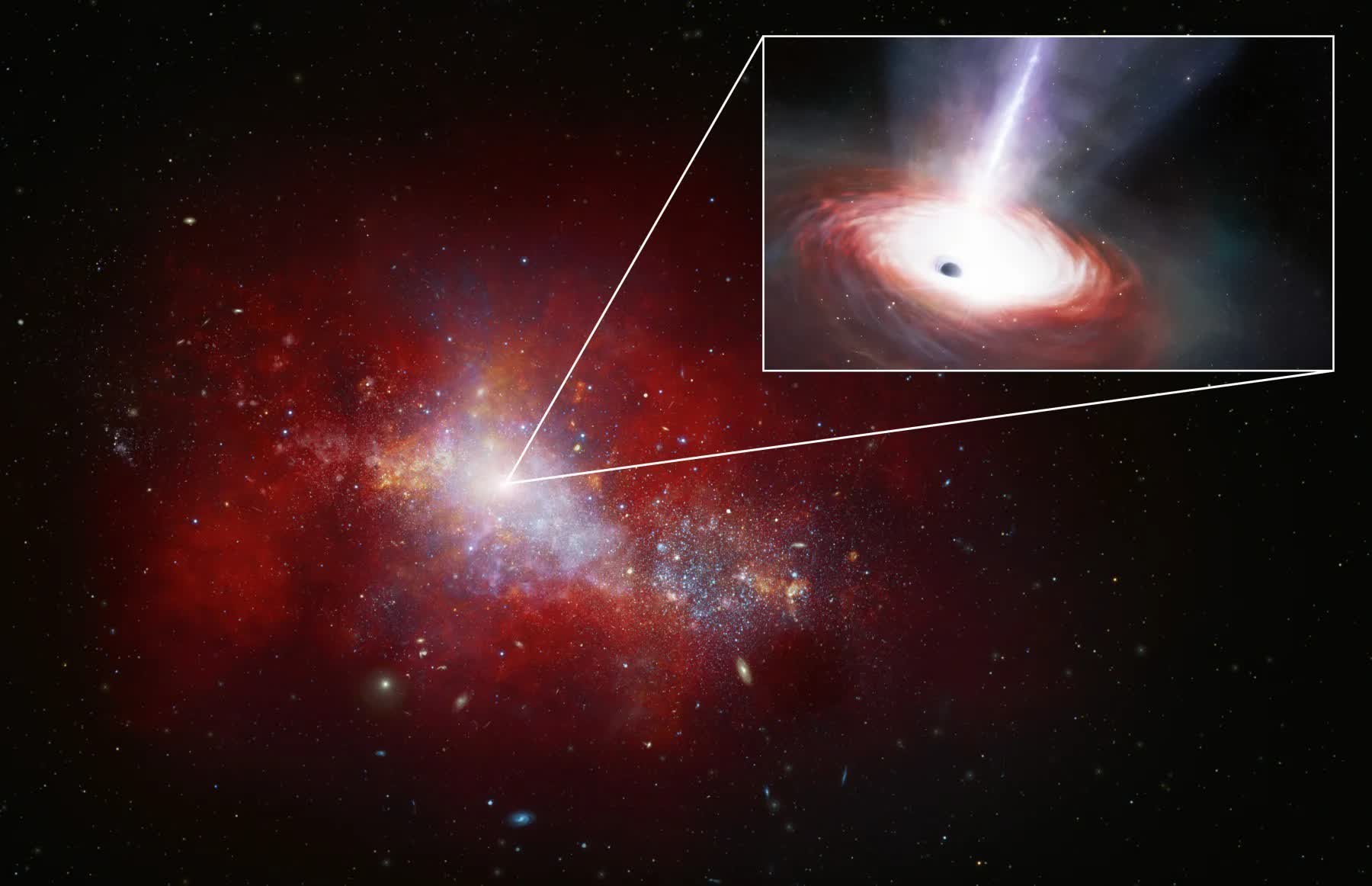The massive image: Quite a few mysteries stay concerning black holes, with astronomers significantly within the formation of the oldest black holes within the early universe. Latest observations from the James Webb Area Telescope might make clear how supermassive black holes started forming so shortly after the Large Bang.
A just lately printed research describes an historic black gap that eats matter far sooner than beforehand thought potential. The invention might supply a clue as to how supermassive black holes shaped within the early universe.
The black gap, labeled LID-568, was found utilizing the James Webb Telescope and information from the Chandra-COSMOS Legacy Survey. At about 7.2 million occasions the Solar’s mass, it is thought of a comparatively low-mass black gap.

Artist’s impression. Credit score: NOIRLab/NSF/AURA/J. da Silva/M. Zamani
Nevertheless, this can be very lively and brilliant in X-ray scans in comparison with different black holes of its age. Due to the time it takes for gentle from the distant cosmos to succeed in Earth, astronomers observe it because it appeared about 1.5 billion years after the Large Bang, which occurred roughly 13.8 billion years in the past.
Evaluation of LID-568’s radiation output signifies it’s absorbing matter at round 40 occasions its Eddington restrict – the theoretical boundary at which a black gap’s inward gravitational power balances out the warmth emitted by the fabric it consumes. Astronomers beforehand believed that supermassive black holes could not type so quickly after the Large Bang, however super-Eddington black holes may supply one clarification for his or her presence so early within the universe’s historical past.
Researchers consider LID-568 doubtless gained a lot of its mass throughout a single fast gorging occasion. One in all two issues might need fueled it: gentle seeds – smaller black holes shaped from the corpses of the universe’s earliest stars – or heavy seeds, which contain the direct accumulation and collapse of fuel and mud.
Understanding how black holes shortly grew supermassive after the Large Bang might assist clarify the formation of galaxies within the early universe, lots of which have a supermassive black gap at their heart. One instance, JADES-GS-z14-0, shocked astronomers when the James Webb telescope detected it earlier this 12 months.
It displayed surprisingly lively and mature star formation solely round 300 million years after the Large Bang. Researchers beforehand doubted that galaxies might develop so massive within the first few hundred million years of the universe’s historical past, however JADES-GS-z14-0 and different just lately noticed objects are difficult prior notions.



